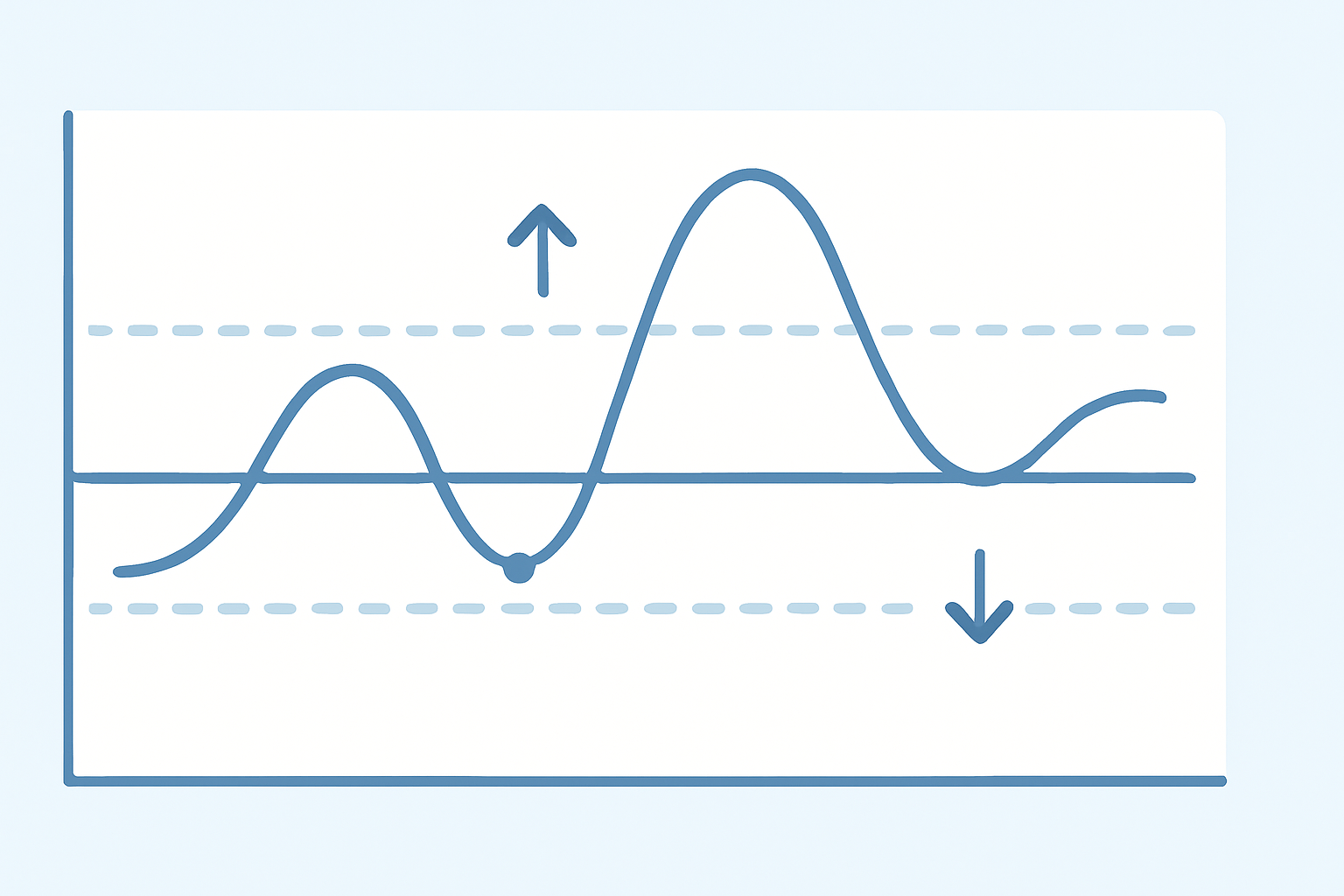Blood pressure, often referred to in clinical terms as “presión arterial,” is a fundamental physiological measure that plays a critical role in determining cardiovascular health. Maintaining what is considered “presión arterial normal” is essential for reducing the risk of heart disease, stroke, and other vascular complications. However, understanding what truly constitutes a healthy blood pressure level requires more than a cursory glance at the numbers. It involves contextualizing the measurements within the broader landscape of individual health, risk factors, lifestyle choices, and clinical guidelines established by authoritative health organizations. In this comprehensive exploration, we will unpack the science of blood pressure, identify the standards for tension arterial normal, and examine how various factors contribute to deviations from these norms.
You may also like: Sudden Spikes in Blood Pressure: What Can Cause a Sudden Increase and When to Seek Medical Attention

Defining Blood Pressure and How It Is Measured
To begin our discussion, it is important to define what blood pressure actually represents. Blood pressure is the force exerted by circulating blood against the walls of the body’s arteries, the major blood vessels in the circulatory system. It is measured in millimeters of mercury (mm Hg) and is typically expressed as two values: systolic pressure over diastolic pressure. The systolic number indicates the pressure in the arteries when the heart beats, while the diastolic number reflects the pressure when the heart is at rest between beats.
The measurement is commonly performed using a sphygmomanometer and a stethoscope or via automated digital devices. Accuracy in measurement is critical, as various factors—such as stress, physical activity, caffeine intake, or even talking during the procedure—can influence the results. The concept of tension arterial normal emerges from repeated, standardized readings taken in a calm environment under clinical supervision.
Understanding What Is Considered Presión Arterial Normal
According to the American Heart Association and other leading cardiovascular health authorities, a normal blood pressure reading is typically defined as systolic pressure less than 120 mm Hg and diastolic pressure less than 80 mm Hg. This range is considered optimal for healthy adults and indicates that the heart and blood vessels are functioning efficiently without undue stress. When readings consistently fall within this range, the likelihood of developing cardiovascular diseases is significantly reduced.
However, it is essential to note that the definition of presión arterial normal is not entirely rigid. Factors such as age, overall health, medication use, and individual variability can influence what is deemed healthy for a specific person. For instance, older adults may have slightly higher acceptable values due to age-related changes in vascular elasticity, whereas individuals with diabetes or chronic kidney disease may require stricter blood pressure control.
The Importance of Maintaining Tension Arterial Normal
Maintaining tension arterial normal is crucial not only for preventing cardiovascular events but also for preserving the health of other organ systems. Chronic elevation in blood pressure, known as hypertension, can lead to damage in the kidneys, eyes, and brain, in addition to the heart and blood vessels. Conversely, hypotension, or abnormally low blood pressure, can impair oxygen delivery to vital tissues, causing dizziness, fainting, and in severe cases, organ failure.
Regular monitoring of blood pressure is a vital part of preventive healthcare. Home blood pressure monitors can empower individuals to track their tension arterial normal status and detect changes that might warrant medical attention. Importantly, maintaining a healthy blood pressure should be seen as a dynamic, ongoing process rather than a fixed outcome.

Risk Factors That Influence Blood Pressure
A wide array of factors can influence an individual’s blood pressure, and understanding these is essential for effective prevention and management. Lifestyle-related contributors such as a high-sodium diet, physical inactivity, excessive alcohol consumption, smoking, and chronic stress can all lead to elevated readings. Obesity and insulin resistance are also strongly associated with hypertension.
Genetics also plays a significant role. Individuals with a family history of hypertension are more likely to experience elevated blood pressure themselves. Additionally, certain demographic factors such as age and ethnicity can predispose individuals to abnormal blood pressure patterns. For example, African American populations have been shown to develop high blood pressure earlier in life and often with more severe consequences.
Medical conditions such as obstructive sleep apnea, thyroid disorders, and adrenal gland tumors can also contribute to secondary hypertension, where the high blood pressure arises as a consequence of another health problem. In such cases, treating the underlying condition is critical to restoring presión arterial normal.

The Role of Diet and Nutrition in Regulating Blood Pressure
Diet is one of the most modifiable and impactful factors in maintaining or restoring tension arterial normal. High intake of sodium—commonly found in processed foods—is strongly linked to hypertension. Conversely, diets rich in potassium, magnesium, calcium, and fiber have been shown to support healthy blood pressure levels. The DASH (Dietary Approaches to Stop Hypertension) diet is a well-researched eating plan specifically designed to reduce blood pressure through increased consumption of fruits, vegetables, whole grains, and lean proteins while minimizing salt, sugar, and saturated fats.
Hydration also plays a role. Dehydration can lead to reduced blood volume and, in some cases, trigger compensatory mechanisms that raise blood pressure. On the other hand, excessive fluid retention due to a high-sodium diet can elevate blood pressure by increasing the volume of circulating blood.
It is equally important to consider dietary patterns rather than isolated nutrients. Mediterranean-style diets, which emphasize whole foods and healthy fats such as olive oil, have been linked to cardiovascular benefits, including the maintenance of presión arterial normal.

Physical Activity and Its Effect on Blood Pressure
Engaging in regular physical activity is one of the most effective non-pharmacological strategies for promoting tension arterial normal. Exercise enhances cardiovascular efficiency, strengthens the heart muscle, and improves arterial flexibility, all of which contribute to lower blood pressure. Aerobic exercises such as walking, jogging, swimming, and cycling have been particularly well-documented for their beneficial effects.
The American College of Sports Medicine recommends at least 150 minutes of moderate-intensity aerobic activity per week for adults. Resistance training, when combined with aerobic activity, can further support healthy blood pressure regulation. Physical activity also aids in weight management, stress reduction, and improved insulin sensitivity, all of which contribute to the maintenance of presión arterial normal.
Importantly, exercise should be tailored to the individual. Those with existing cardiovascular concerns should consult healthcare providers before beginning a new fitness regimen. Incremental improvements and consistency over time are more beneficial than sporadic, high-intensity efforts.

Stress, Sleep, and Hormonal Influences on Blood Pressure
The interplay between psychological stress and blood pressure is complex and significant. Stress activates the sympathetic nervous system, leading to temporary spikes in blood pressure due to the release of hormones like cortisol and adrenaline. Chronic stress can contribute to sustained elevations, particularly when coupled with poor coping mechanisms such as overeating, smoking, or alcohol abuse.
Sleep is another crucial factor. Poor sleep quality, especially in cases of sleep apnea, is strongly associated with hypertension. The absence of normal nocturnal dipping in blood pressure—a natural drop that should occur during restful sleep—is considered a marker of cardiovascular risk.
Hormonal factors also play a role in modulating blood pressure. For example, fluctuations in estrogen and progesterone during the menstrual cycle or menopause can affect vascular tone. Conditions such as hyperaldosteronism or Cushing’s syndrome, which involve hormonal imbalances, can directly lead to hypertension.
Medical Approaches to Managing Abnormal Blood Pressure
When lifestyle modifications are insufficient to achieve or maintain tension arterial normal, pharmacological intervention may become necessary. A variety of medications are available to address different mechanisms contributing to high blood pressure. These include diuretics to reduce fluid volume, ACE inhibitors and angiotensin receptor blockers (ARBs) to relax blood vessels, beta-blockers to reduce heart rate, and calcium channel blockers to ease arterial tension.
Treatment plans should be individualized based on the patient’s overall health profile, comorbid conditions, and potential drug interactions. Regular follow-up is essential to monitor effectiveness and adjust dosages as needed. In some cases, a combination of medications may be required to achieve optimal blood pressure control.
It is equally important not to overlook cases of low blood pressure that cause symptoms. In such instances, treatment may include increasing fluid and salt intake, wearing compression stockings, or using medications to raise blood pressure. The goal is always to restore presión arterial normal in a way that supports overall cardiovascular and systemic health.

Monitoring and Interpreting Blood Pressure Trends Over Time
Blood pressure is not a static measurement but rather a dynamic marker that can fluctuate in response to various stimuli. For this reason, a single elevated reading does not necessarily indicate chronic hypertension, just as one low reading does not confirm hypotension. Healthcare providers typically recommend multiple readings over time, including ambulatory blood pressure monitoring, to obtain a more accurate picture of an individual’s typical blood pressure profile.
Tracking trends is especially important for those at risk of cardiovascular disease or who are already managing chronic conditions. Patient education is crucial in this context. Understanding what constitutes tension arterial normal and recognizing the implications of readings outside this range can empower individuals to take proactive steps toward health maintenance.
Digital tools, including smartphone apps and home monitors with cloud-based data storage, have made it easier than ever to track blood pressure over time. However, these tools should complement—not replace—regular medical consultations.
A Holistic Perspective on Cardiovascular Wellness
Achieving and maintaining presión arterial normal requires a holistic approach that integrates lifestyle, behavioral, and medical strategies. No single intervention can substitute for a comprehensive plan that includes nutrition, exercise, stress management, and, when necessary, medication. Social determinants of health, such as access to healthcare, education, and socioeconomic status, also play a crucial role and must be addressed to improve population-wide cardiovascular outcomes.
Community-based programs that promote heart-healthy living, public policy initiatives aimed at reducing dietary sodium, and education campaigns about the importance of tension arterial normal are all valuable tools in the fight against hypertension and its complications. Empowering individuals with knowledge and resources enables them to make informed decisions and take ownership of their cardiovascular health.
Frequently Asked Questions: Understanding Tension Arterial Normal and Cardiovascular Health
1. Can emotional well-being influence presión arterial normal long-term?
Absolutely. While acute emotional stress can cause short-term elevations in blood pressure, chronic psychological distress can have more insidious effects on cardiovascular health. Long-standing anxiety, depression, or unresolved trauma can dysregulate the autonomic nervous system, disrupting circadian rhythms and altering hormonal outputs like cortisol and adrenaline. These hormonal imbalances may gradually shift what was once presión arterial normal into a consistently elevated state. Strategies such as mindfulness, therapy, and social support are now being recognized as adjuncts to clinical care, offering a more holistic way to preserve tension arterial normal through emotional resilience.
2. Are wearable technologies reliable for monitoring tension arterial normal in daily life?
Wearables have made significant strides in the accuracy of blood pressure monitoring, but they are not yet replacements for clinical devices. While some FDA-cleared wearables offer valuable insights, they often rely on optical sensors and algorithms that can be influenced by movement, skin tone, and ambient light. That said, they do provide a helpful way to observe patterns and detect anomalies that might otherwise go unnoticed. Tracking changes in your baseline presión arterial normal over time with wearables can be particularly useful when used in tandem with professional evaluations. For best results, wearables should supplement, not replace, validated home or clinic-based monitoring systems.
3. How do environmental factors like altitude or pollution affect presión arterial normal?
Environmental conditions can have a surprising impact on blood pressure regulation. At high altitudes, oxygen levels decrease, which can trigger vasoconstriction and a compensatory rise in blood pressure—especially in individuals not acclimated to these conditions. Conversely, long-term residents of mountainous areas may adapt and maintain tension arterial normal despite reduced oxygen. Air pollution, on the other hand, introduces particulates and toxins that induce systemic inflammation and oxidative stress, which are linked to higher blood pressure levels. In heavily polluted urban environments, this effect can be chronic, making it more difficult to maintain presión arterial normal without lifestyle interventions.
4. Is it possible for athletes to have abnormal blood pressure readings despite peak physical health?
Yes, and it often surprises both patients and clinicians. Athletes may experience a condition known as “white coat hypertension,” where blood pressure spikes in clinical settings due to anxiety. Others may have masked hypertension, showing normal readings in clinics but elevated levels during intense training or competition. Additionally, endurance athletes can sometimes present with lower diastolic pressures due to enhanced vascular compliance, leading some readings to fall below traditional tension arterial normal ranges. While this isn’t inherently problematic, it requires contextual interpretation. Athletic individuals should still undergo regular cardiovascular screenings to ensure their presión arterial normal is functionally appropriate and not indicative of underlying pathology.
5. Can fluctuations in blood pressure during menopause alter presión arterial normal?
Menopause is a time of significant hormonal change, particularly involving estrogen and progesterone, both of which play key roles in vascular health. As these hormones decline, blood vessels can become less flexible, potentially leading to increased blood pressure. Even women who previously maintained excellent tension arterial normal may begin to see a gradual shift toward elevated values during this transition. Night sweats, insomnia, and increased stress levels during menopause can further complicate regulation. Monitoring presión arterial normal during and after menopause is important, as this period often coincides with other risk factors for cardiovascular disease.
6. What are some culturally specific practices that support tension arterial normal around the world?
Global traditions often incorporate lifestyle habits that unknowingly align with modern medical advice. For instance, the Mediterranean diet—rich in olive oil, legumes, and fresh vegetables—has long been associated with cardiovascular benefits and supports presión arterial normal. In Japan, low sodium consumption and regular physical activity embedded in daily routines contribute to healthier blood pressure profiles. Nordic countries emphasize cold exposure and sauna use, both of which have been linked to vascular health and tension arterial normal through improved endothelial function. Exploring these cross-cultural practices reveals how lifestyle, tradition, and cardiovascular wellness are deeply intertwined.
7. Can sleep chronotypes (morning vs. evening types) affect blood pressure patterns?
Yes, individual chronotypes can significantly influence circadian regulation of blood pressure. Morning types, or “larks,” tend to have more robust nocturnal dipping patterns, which align with the body’s natural rhythm of achieving presión arterial normal during sleep. Conversely, evening types, or “night owls,” may experience blunted or absent dipping, which is associated with higher cardiovascular risk. This may be due to misalignment between internal biological clocks and external social demands, like early work schedules. Adjusting lifestyle habits to honor one’s chronotype can help in maintaining tension arterial normal and reducing long-term vascular strain.
8. How does gut health interact with presión arterial normal?
Emerging research has begun to link gut microbiota composition with cardiovascular regulation. A diverse, balanced gut microbiome produces metabolites such as short-chain fatty acids (SCFAs), which support healthy vascular tone and inflammation control. Dysbiosis—an imbalance in gut bacteria—can contribute to systemic inflammation and elevated blood pressure, undermining tension arterial normal. Diets high in fiber, fermented foods, and polyphenols have been shown to promote gut health, which in turn benefits presión arterial normal. While the gut-heart axis is still an evolving field, it offers promising avenues for non-traditional blood pressure management.
9. Are there cognitive or neurological consequences of consistently ignoring abnormal blood pressure?
Yes, sustained deviations from tension arterial normal can silently impact brain health long before physical symptoms arise. Chronic hypertension is a known contributor to vascular dementia, as it compromises cerebral blood flow and promotes microvascular damage. Even moderate elevations, if ignored, can lead to cognitive decline over time, affecting memory, decision-making, and executive function. Conversely, prolonged hypotension can impair perfusion and oxygenation of brain tissue, posing its own risks. Maintaining presión arterial normal is not just about heart health—it’s also vital for preserving long-term cognitive vitality.
10. What innovations are on the horizon for improving tension arterial normal monitoring and management?
The future of cardiovascular monitoring is becoming increasingly personalized and data-driven. AI-powered algorithms are being developed to analyze continuous blood pressure data and predict risk trends before clinical thresholds are breached. Smart textiles with embedded sensors are emerging as non-invasive tools to monitor presión arterial normal discreetly throughout the day. Pharmacogenomics—tailoring medications based on individual genetic profiles—is gaining traction as a way to optimize treatment efficacy while minimizing side effects. These advances aim not just to correct blood pressure anomalies, but to proactively support tension arterial normal as part of a broader, preventative healthcare model.
Conclusion: Why Understanding Presión Arterial Normal Is Vital for Lifelong Cardiovascular Health
Recognizing and maintaining presión arterial normal is one of the most impactful steps individuals can take to safeguard their cardiovascular health. Blood pressure is a silent yet powerful predictor of future health outcomes, and even modest improvements can yield substantial long-term benefits. Understanding the nuances of what constitutes normal tension arterial, the factors that influence it, and the strategies for achieving balance allows individuals to become active participants in their health journey.
By approaching blood pressure management with a blend of scientific knowledge, lifestyle awareness, and medical oversight, people can reduce their risk of heart attack, stroke, kidney disease, and other serious conditions. In an era of increasing chronic disease burden, the importance of educating the public about presión arterial normal cannot be overstated. Through informed action and community engagement, the goal of widespread cardiovascular wellness becomes not only achievable but sustainable.
normal blood pressure levels, healthy heart rate and blood pressure, systolic and diastolic pressure, cardiovascular health tips, hypertension prevention strategies, managing high blood pressure naturally, lifestyle changes for heart health, heart-healthy diets, blood pressure monitoring at home, DASH diet benefits, how to lower blood pressure, exercise for cardiovascular wellness, heart disease risk factors, vascular health improvement, blood pressure and aging, stress and heart health, hormonal changes and blood pressure, sleep and cardiovascular function, wearable health technology, understanding blood pressure fluctuations
Was this article helpful? Don’t let it stop with you. Share it right now with someone who needs to see it—whether it’s a friend, a colleague, or your whole network. And if staying ahead on this topic matters to you, subscribe to this publication for the most up-to-date information. You’ll get the latest insights delivered straight to you—no searching, no missing out.


